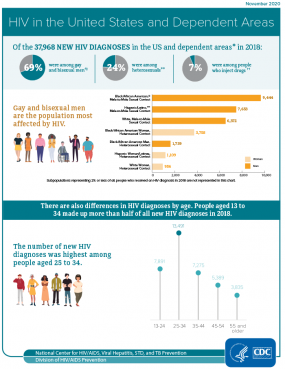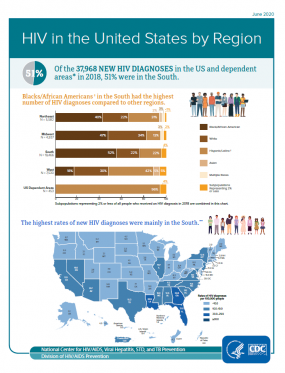Basic Statistics

HIV remains a persistent public health problem in the United States. While great progress has been made in preventing and treating HIV, there is still much to do. This section provides a broad overview of HIV in the United States and its territories. For more detailed analysis of HIV data and its impact in the United States, visit our Statistics Center. For information on the impact HIV has around the world, visit CDC’s Global HIV and TB website.
New HIV Diagnoses and People with Diagnosed HIV in the US and Dependent Areas by Area of Residence, 2021*
* Among people aged 13 and older.
Source: CDC. Diagnoses of HIV infection in the United States and dependent areas, 2021. HIV Surveillance Report 2023;34.
How many people receive an HIV diagnosis each year in the United States and 6 dependent areas?
In 2021, 36,136 people received an HIV diagnosis in the United States and dependent areas.a,b The annual number of new diagnoses decreased 7% from 2017 to 2021.
How many people have HIV in the United States?
An estimated 1.2 million people in the United Statesc had HIV at the end of 2021, the most recent year for which this information is available. Of those people, about 87% knew they had HIV.
How does HIV affect different groups of people?
There are different ways to answer this question.
In 2021, male-to-male sexual contactd accounted for 67% (24,107) of all new HIV diagnoses in the United States and dependent areas. In the same year, heterosexual contact accounted for 22% (8,059) of all HIV diagnoses.
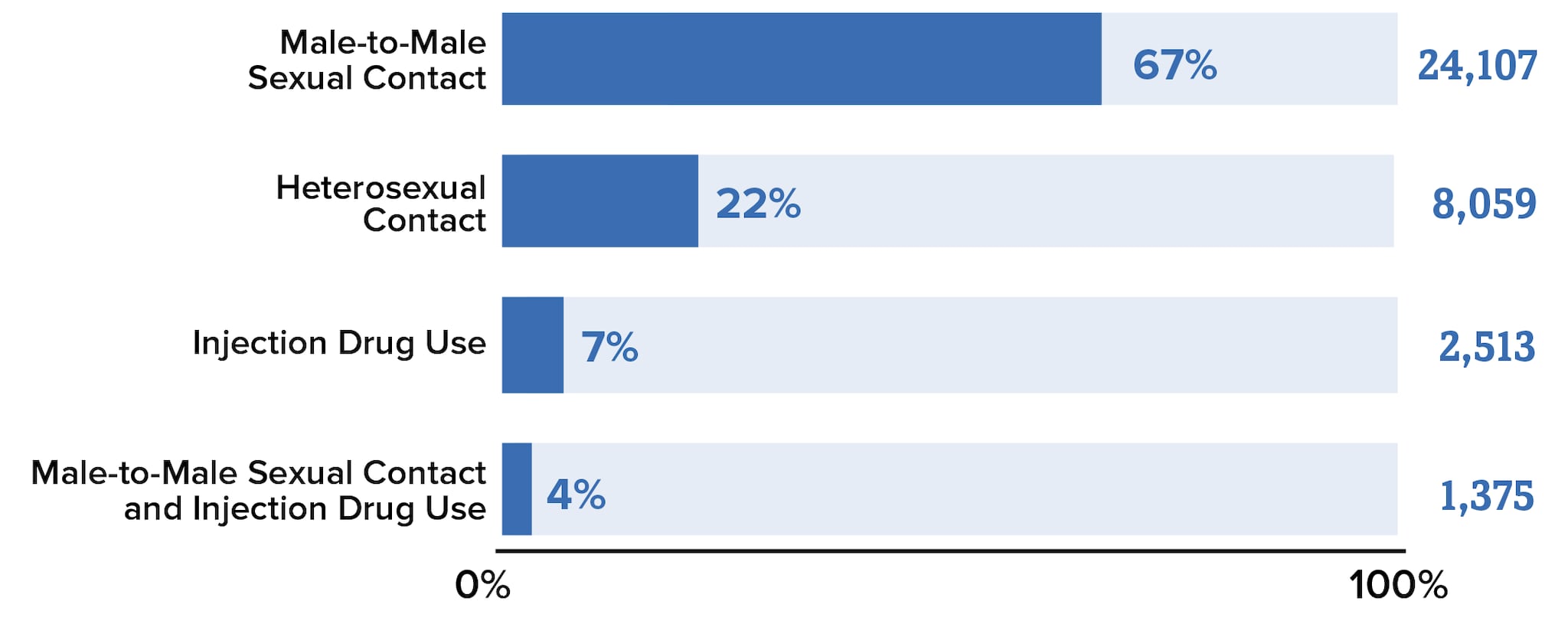
NOTE: Does not include other and perinatal transmission categories.
* Among people aged 13 and older.
Source: CDC. Diagnoses of HIV infection in the United States and dependent areas, 2021. HIV Surveillance Report 2023;34
If we look at HIV diagnoses by race and ethnicity, we see that Black/African American people are most affected by HIV. In 2021, Black/African American people accounted for 40% (14,528) of all new HIV diagnoses. Additionally, Hispanic/Latino people are also strongly affected. They accounted for 29% (10,467) of all new HIV diagnoses.
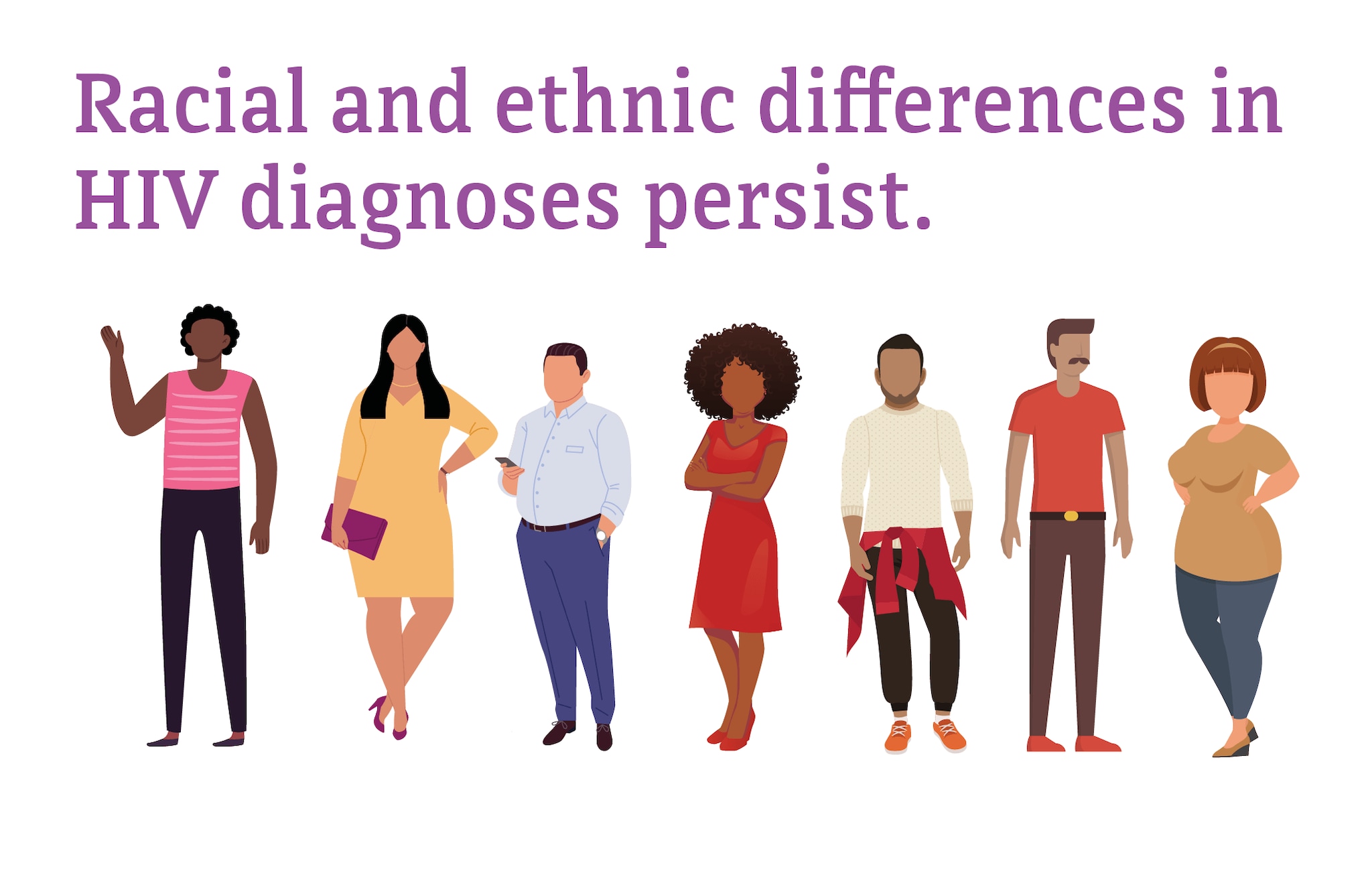
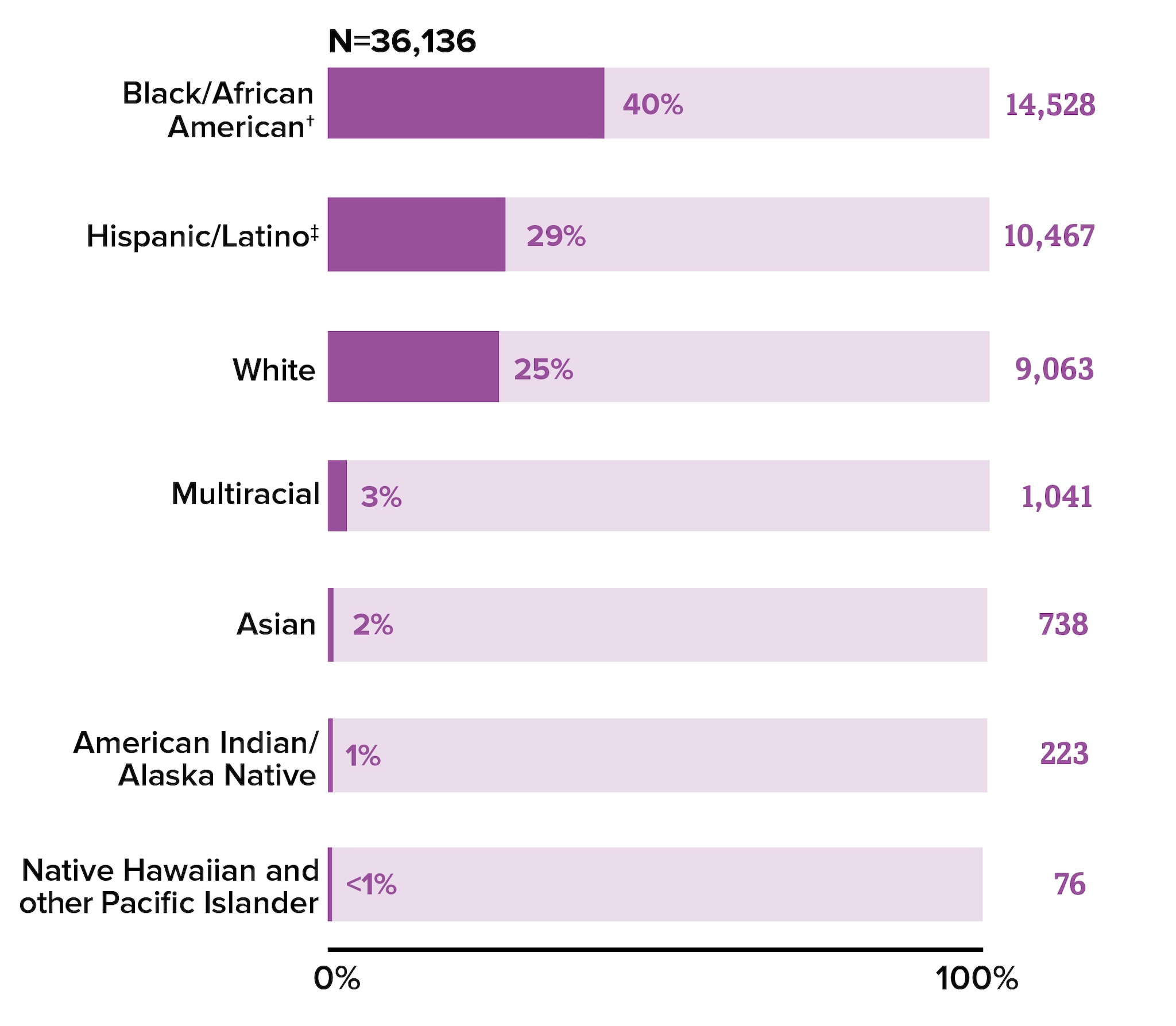
* Among people aged 13 and older.
† Black refers to people having origins in any of the Black racial groups of Africa. African American is a term often used for people of African descent with ancestry in North America.
‡ Hispanic/Latino people can be of any race.
Source: CDC. Diagnoses of HIV infection in the United States and dependent areas, 2021. HIV Surveillance Report 2023;34
The most affected subpopulation is Black/African American gay and bisexual men.
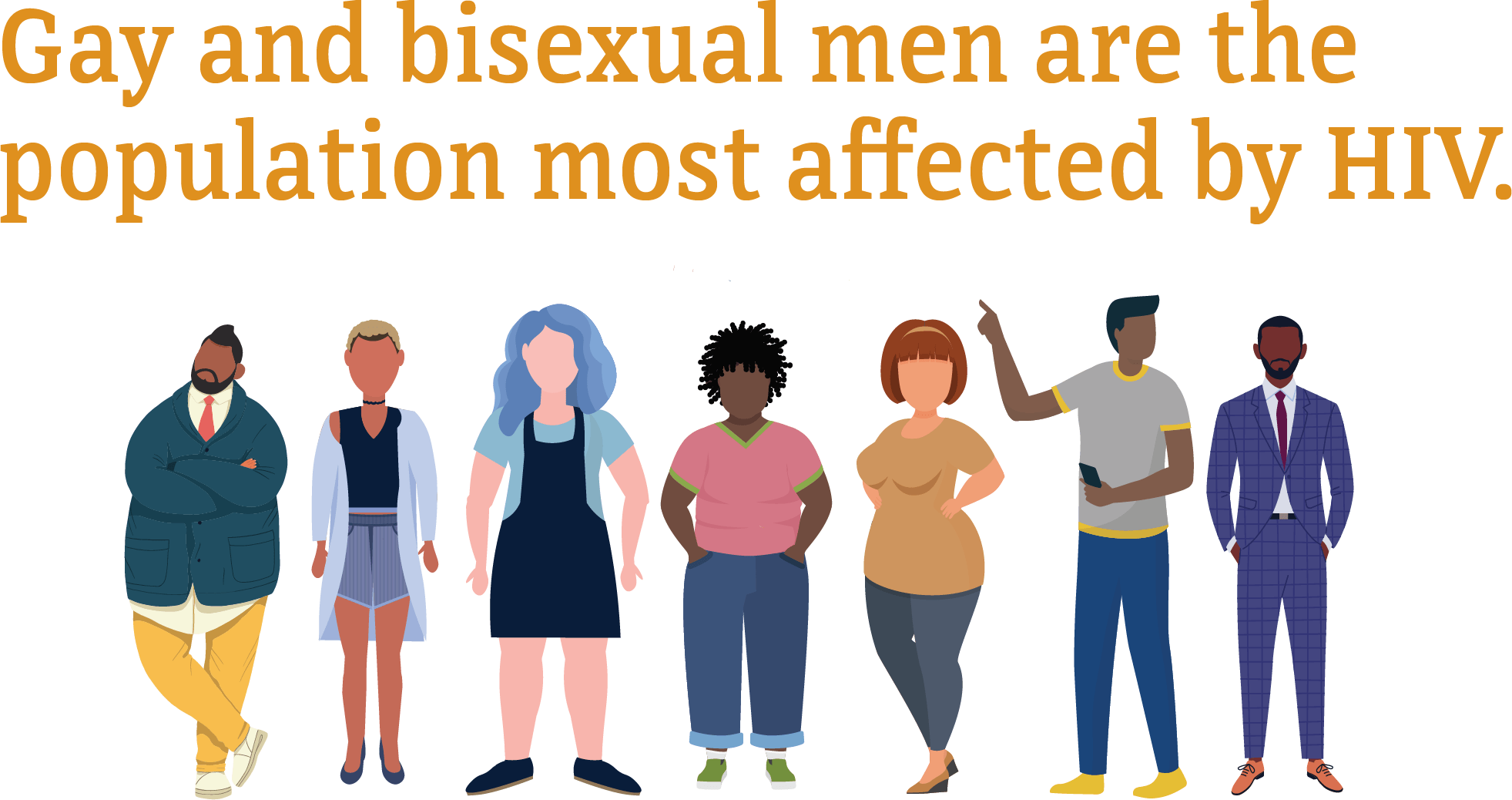
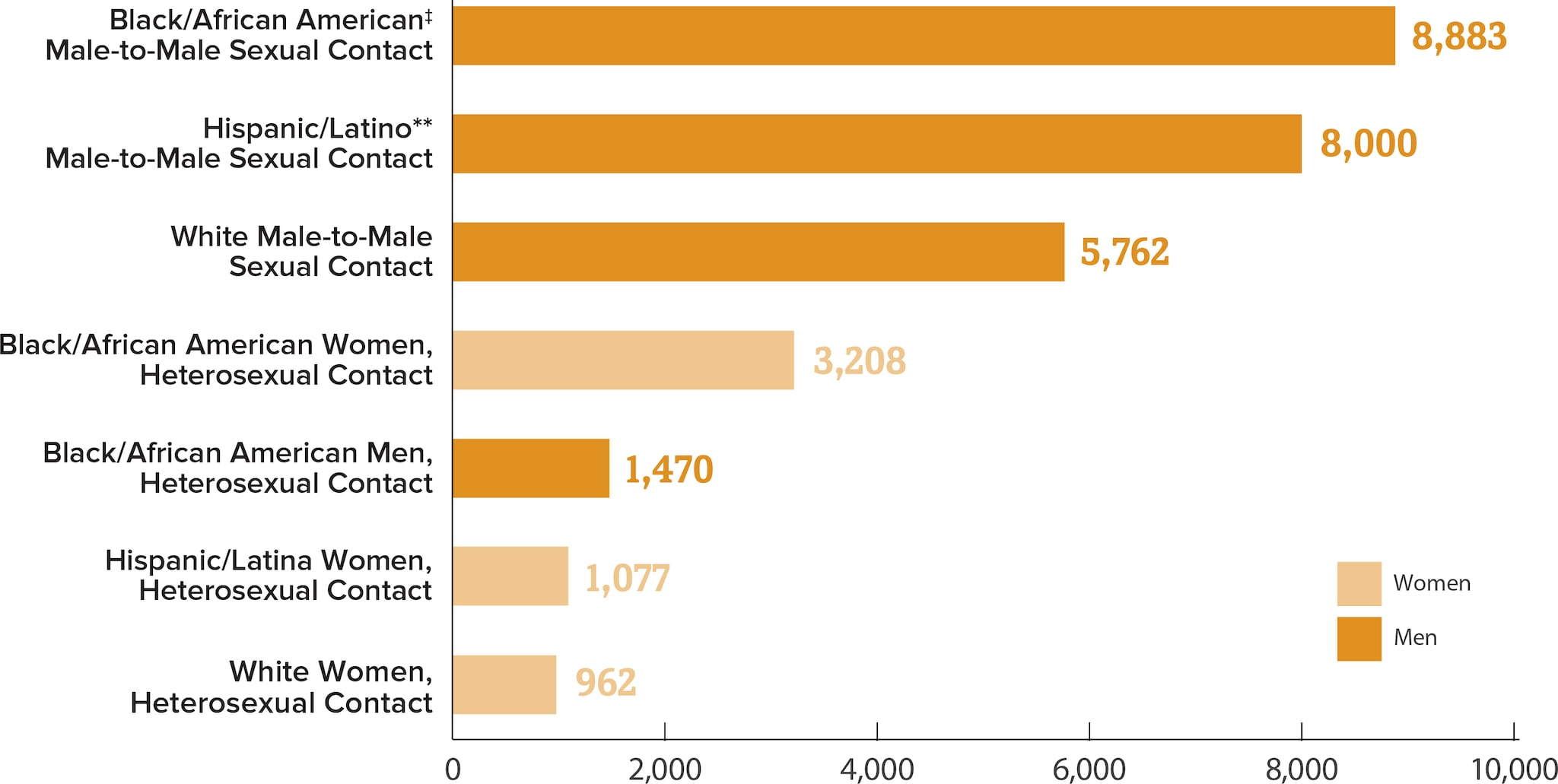
Subpopulations representing 2% or less of all people who received an HIV diagnosis in 2021 are not represented in this chart.
* Among people aged 13 and older.
† Transmission category is classified based on a hierarchy of risk factors most likely responsible for HIV transmission. Classification is determined based on the person’s assigned sex at birth. Data have been statistically adjusted to account for missing transmission category.
‡ Black refers to people having origins in any of the Black racial groups of Africa. African American is a term often used for people of African descent with ancestry in North America
** Hispanic/Latino people can be of any race.
Source: CDC. Diagnoses of HIV infection in the United States and dependent areas, 2021. HIV Surveillance Report 2023;34.
Are some regions of the United States more affected by HIV than others?
Yes. Most cases of HIV occur in metropolitan areas with 500,000 or more people. The South has the highest number of people living with HIV, but if population size is taken into account, the Northeast has the highest rate of people living with HIV. (Rates are the number of cases of disease per 100,000 people. Rates allow number comparisons between groups of different sizes.)
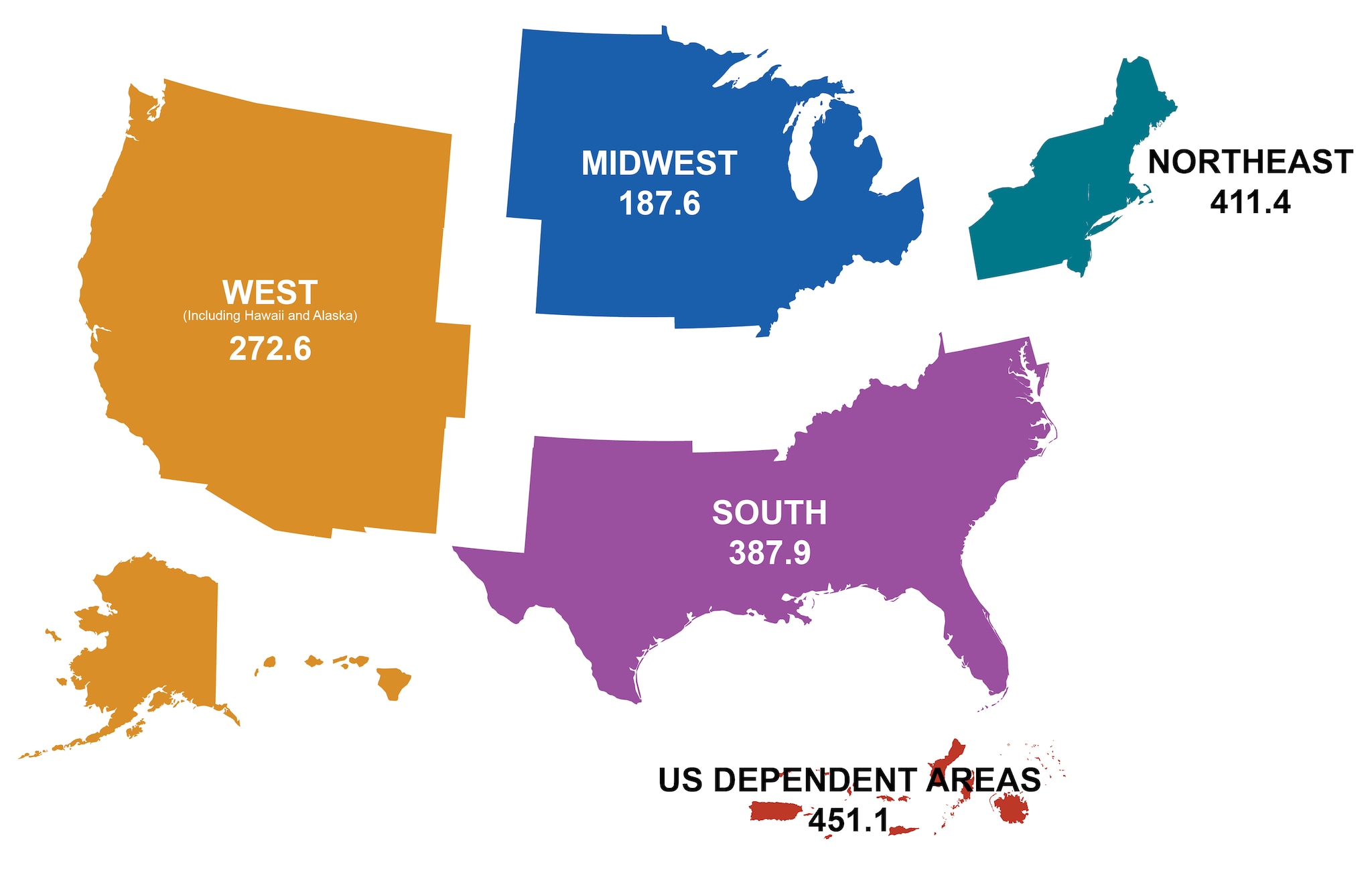
* Rates per 100,000 people.
† Includes adults, adolescents, and children under the age of 13.
Source: CDC. Diagnoses of HIV infection in the United States and dependent areas, 2021. HIV Surveillance Report 2023;34.
a Unless otherwise noted, data in this web content are for adults and adolescents aged 13 and older.
b American Samoa, Guam, the Northern Mariana Islands, Puerto Rico, the Republic of Palau, and the US Virgin Islands.
c In the 50 states and the District of Columbia.
d The term male-to-male sexual contact is used in CDC surveillance systems. It indicates a behavior that transmits HIV infection, not how individuals self-identify in terms of their sexuality.
e Includes infections attributed to male-to-male sexual contact and injection drug use (men who reported both risk factors).
Other Resources
- HIV in the US and Dependent Areas
- HIV in the US by Race/Ethnicity
- HIV in the US by Age
- Terms, Definitions, and Calculations Used in CDC HIV Surveillance Publications
- Surveillance Overview (information about CDC’s HIV and AIDS surveillance activities)
- HIV Surveillance Reports
- NCHHSTP AtlasPlus
